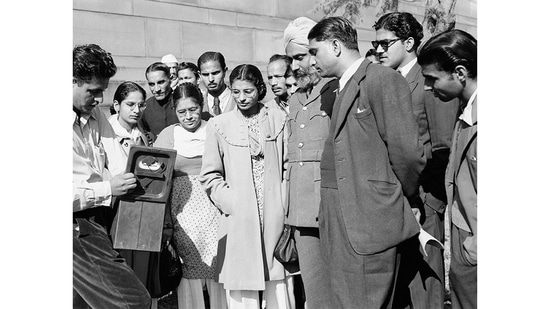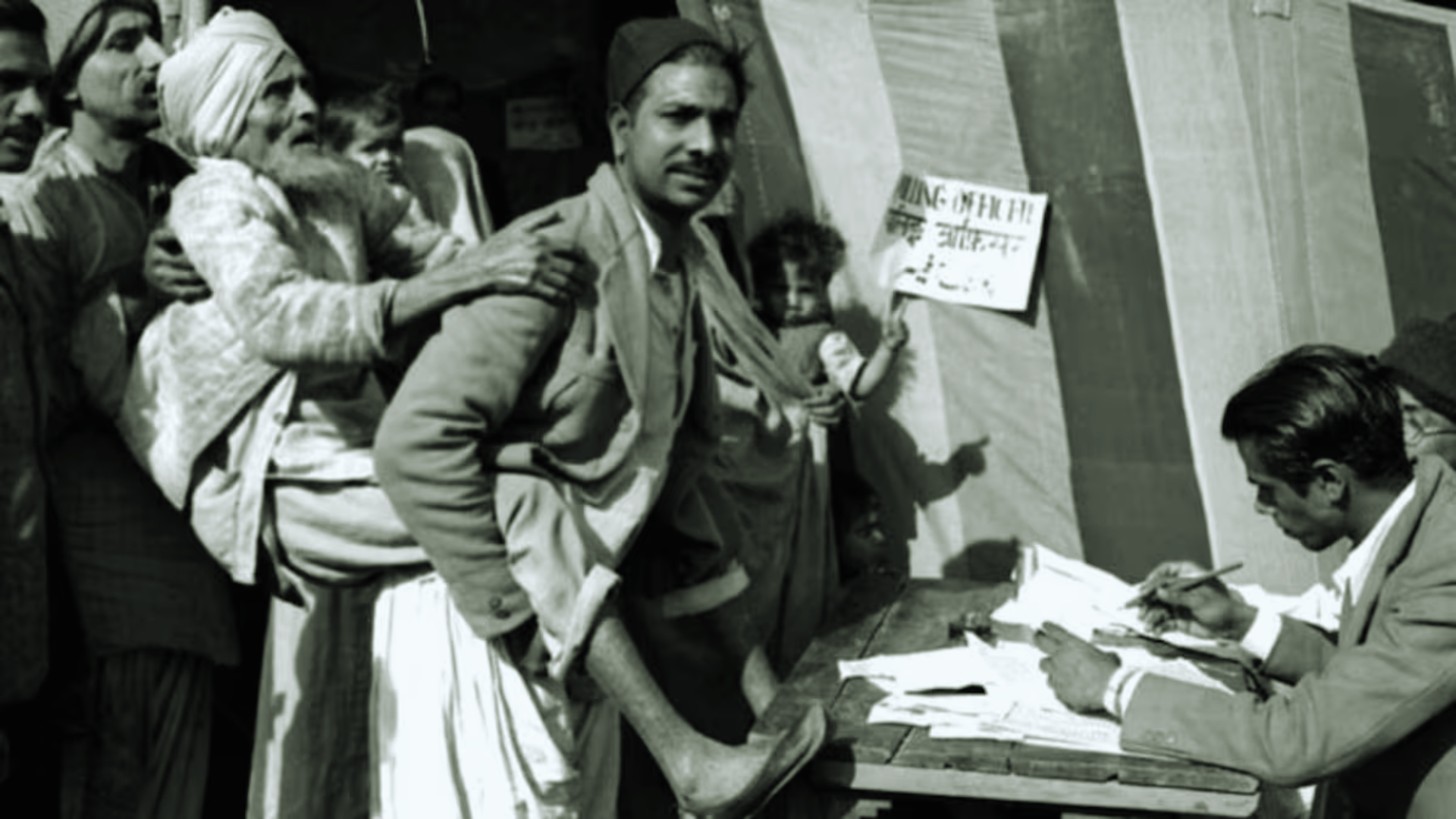Describing it as a significant moment, Chief Election Commissioner Rajiv Kumar stated that he would reveal the timetable for the 18th Lok Sabha elections today at 3 pm. The elections are expected to take place in multiple phases, likely spanning April and May. Additionally, it’s anticipated that four states – Arunachal Pradesh, Andhra Pradesh, Odisha, Sikkim – along with the Union Territory of Jammu and Kashmir, will hold Assembly elections simultaneously.
However, as India is witnessing the election season, let’s dive in to the fact of how did the country conducted it’s 1st election after the British reign.
How Was The 1st General Elections Held?

Stepping back in time to the historic year of 1951 when India, fresh from the shackles of colonial rule, embarked on its first-ever democratic journey through general elections. From 25th October 1951 to 21st February 1952, the nation witnessed a monumental event as voters cast their ballots to select the inaugural 489 members of the Lok Sabha, the cornerstone of India’s Parliament. Simultaneously, the electoral process unfolded across various state legislatures, setting a precedent for democratic participation on a grand scale.
Envisioned within the framework of the constitution adopted on 26th November 1949, these elections marked a pivotal moment in India’s democratic evolution. With the Constituent Assembly serving as the interim parliament and Jawaharlal Nehru leading the interim cabinet, the nation laid the foundation for its democratic machinery. The establishment of the Election Commission in 1949, followed by the appointment of Sukumar Sen as the pioneering Chief Election Commissioner in March 1950, underscored India’s commitment to fair and transparent electoral practices.
Parliament’s enactment of the Representation of the People Act in April 1950 set the stage for the meticulous orchestration of parliamentary and state legislature elections. Across 401 constituencies spanning 25 states, the 489 Lok Sabha seats were strategically allocated. From the adoption of the first-past-the-post system in 314 constituencies to the unique representation of 86 constituencies electing two members, one from the general populace and one from Scheduled Castes or Scheduled Tribes, each electoral facet was meticulously crafted.
Furthermore, the provision within the constitution for the nomination of two Anglo-Indian members by the President of India added an intriguing layer of diversity to the parliamentary landscape. As the nation forged ahead, shedding the vestiges of colonial rule, these elections not only upheld the principles of democracy but also laid the groundwork for inclusive representation, affirming India’s commitment to pluralism and equality.
Gist:

– A total of 1,949 candidates vied for the 489 seats in the Lok Sabha, each assigned a distinct colored ballot box at polling booths, featuring their name and symbol.
– To manage the electoral rolls, 16,500 clerks were hired on a six-month contract, utilizing 380,000 reams of paper for printing.
– With 173,212,343 registered voters (excluding Jammu and Kashmir) out of a population of 361,088,090, based on the 1951 census, this election emerged as the largest of its time. All Indian citizens over 21 were eligible to vote.
– Due to challenging terrain and harsh weather conditions, the election spanned 68 phases.
– A staggering total of 196,084 polling booths were established, with 27,527 reserved for female voters.
– While most voting occurred in early 1952, Himachal Pradesh cast its votes in 1951 to avoid weather-related hindrances.
– Voting in the rest of the states took place between February and March 1952, except for Jammu & Kashmir, where Lok Sabha elections didn’t occur until 1967. The first votes were cast in the Chini tehsil of Himachal Pradesh.
– The outcome saw a resounding victory for the Indian National Congress (INC), securing 45% of the votes and clinching 364 out of 489 seats.
– The Socialist Party, securing only 11% of the vote, trailed behind with just twelve seats.
– Jawaharlal Nehru emerged as the nation’s first democratically elected Prime Minister, marking a significant milestone in India’s democratic journey.
How many political parties contested elections?
A total of 53 parties and 533 independents contested the 489 seats


Parties competed for a total of 489 seats, with the Indian National Congress securing a commanding majority by winning 364 seats, constituting 45% of the total votes cast. Emerging as the principal opposition party, the Communist Party of India secured a total of 16 seats.
Who was the 1st PM of India:
Pandit Jawahar Lal Nehru became Independent India’s first democratically elected prime minister.























